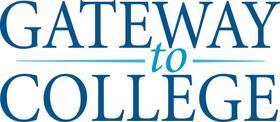What Is a Community College? (2025 Update)
Introduction
A community college is a public, open-access higher education institution that offers affordable post-secondary options—typically associate degrees, certificates, and workforce training programs. In 2025, as families weigh the rising costs of four-year universities, community colleges remain a cornerstone of the American education system, blending affordability, flexibility, and career readiness.
1. Purpose & Mission
Community colleges were created to expand access to higher education. Unlike selective universities, they admit nearly all students who hold a high school diploma or equivalent. Their mission has broadened in recent years to focus on:
Career preparation: Short-term credentials for fast-growing fields like healthcare, IT, advanced manufacturing, and AI.
Transfer opportunities: Pathways that allow students to begin locally, then move on to a four-year institution at lower total cost.
Lifelong learning: Flexible courses for adults balancing work, caregiving, or reskilling.
As Dr. Walter Bumphus, president of the American Association of Community Colleges (AACC), recently noted, “Community colleges have always been gateways to opportunity, but in 2025, they are increasingly engines of innovation in workforce development.”
For parents exploring options, resources like our can be helpful when weighing community colleges against other educational pathways.
2. Enrollment & Scale
According to the U.S. Department of Education, the United States is home to about 1,026 community colleges, serving more than 10.5 million students nationwide. Roughly 6.4 million are enrolled for credit, while another 4.1 million take non-credit continuing education courses.
Enrollment is rebounding after pandemic-era declines:
Freshman enrollment rose more than 6% between fall 2023 and fall 2024.
Dual enrollment programs (high school students earning college credit) are expanding rapidly.
Credential awards increased by 10.3% in spring 2024, reflecting growing interest in short, skills-based programs.
These figures illustrate that community colleges are no longer a fallback option, but a central part of higher education’s recovery and evolution.
3. Cost & Affordability
Community colleges remain the most affordable option in U.S. higher education. In 2025:
Average annual tuition (public, in-state): about $5,099.
In-district rates: can be as low as $3,600 per year.
Out-of-state tuition: averages $8,784.
Full cost of attendance (including housing, transportation, and books): typically ranges between $15,000–$20,000 annually.
For many families, federal Pell Grants and state aid cover most tuition costs. More than a dozen states—including California, New Mexico, and New York—now operate tuition-free community college programs, significantly reducing or even eliminating out-of-pocket expenses. A 2024 Forbes analysis found that these state-level initiatives are expanding steadily, with policymakers viewing them as key drivers of workforce development.
4. Equity & Access
Community colleges enroll some of the nation’s most diverse student populations, including:
First-generation college-goers.
Working adults seeking new career skills.
Low-income families using community college as a debt-free starting point.
High school students earning early credits.
The flexibility of evening classes, hybrid formats, and fully online courses makes community college especially accessible. Many campuses also provide food pantries, childcare centers, and mental health resources—recognizing that affordability is about more than tuition.
For students coming from independent schools, guides like can help families map how community colleges fit into long-term goals.
5. Programs & Pathways
Community colleges offer a wide range of programs designed to serve different learner needs:
Associate Degrees (AA, AS, AAS): Two-year degrees that can transfer to a university or provide career-ready training.
Certificates: Short-term programs that focus on targeted industries like healthcare, coding, or logistics.
Bachelor’s Degrees: A growing number of community colleges now offer limited four-year degrees in high-demand areas such as nursing, cybersecurity, and applied technology.
For example, Houston Community College, rebranded in 2025 as Houston City College, introduced bachelor’s degrees in health care management and AI & robotics. The rebrand and program expansion drew record enrollment, underscoring strong student demand for affordable four-year pathways.
6. Career Outcomes
Community college graduates often see strong returns on investment. According to the Georgetown Center on Education and the Workforce, associate degree holders earn $7,000–$9,000 more annually than high school graduates on average. Career-focused credentials in nursing, information technology, and skilled trades can lead directly to jobs with starting salaries of $50,000 or more.
Equally important, students who transfer to four-year universities after completing their associate degree save tens of thousands of dollars while still achieving the same bachelor’s credential.
7. Real-World Example
Consider a California student enrolled through the California College Promise tuition-free program. By completing two years of general education at a community college and then transferring to a University of California campus, that student can save upwards of $30,000 compared to starting directly at a four-year institution.
This model is becoming increasingly common: community college for the first two years, followed by transfer, is now seen as one of the most financially sustainable ways to earn a bachelor’s degree.
Summary Snapshot
| Feature | 2025 Snapshot |
|---|---|
| Enrollment | 10.5 million students nationwide |
| Tuition (public, in-state) | ~$5,100 average (as low as ~$3,600 in-district) |
| Cost of Attendance | $15,000–$20,000 annually with housing/fees |
| Credential Awards | Up 10.3% in 2024 |
| Program Expansion | Certificates, workforce training, bachelor’s degrees |
| Tuition-Free States | 12+ states now offering free tuition |
| Innovation Example | Houston City College launches bachelor’s degrees in healthcare and AI |
Expert Perspective
As higher education costs climb, experts increasingly view community colleges as smart financial and career decisions rather than fallback options. Dr. Martha Kanter, former U.S. Under Secretary of Education, recently observed: “Community colleges are redefining value in higher education—offering both affordability and direct access to the fastest-growing careers in the economy.”
Conclusion
A community college in 2025 is far more than an affordable entry point into higher education. It is a dynamic, innovative institution designed to serve a wide range of learners—whether they seek a short-term certificate, a transfer pathway, or even a bachelor’s degree.
For parents and educators advising students, the message is clear: community colleges remain one of the most accessible, cost-effective, and career-aligned choices available in the modern education landscape.















